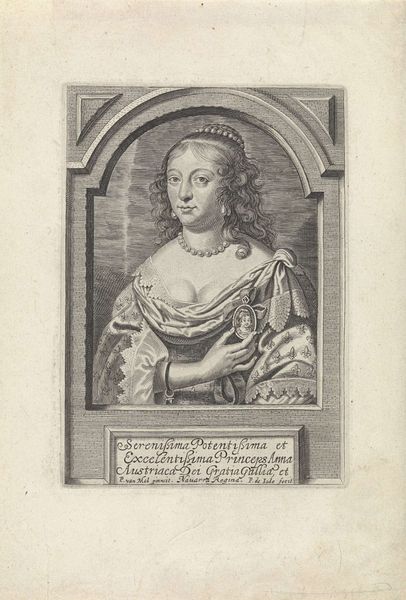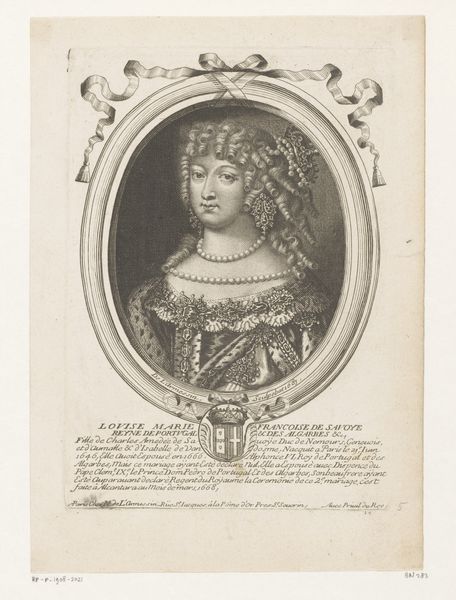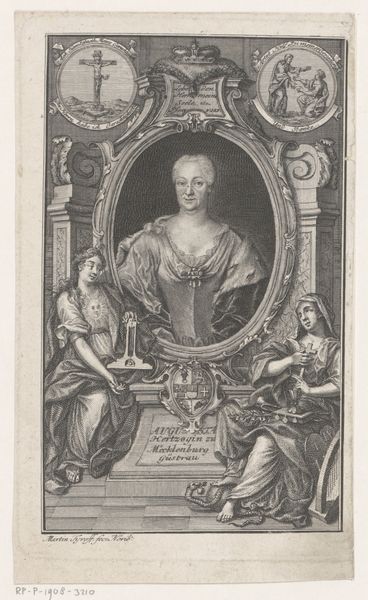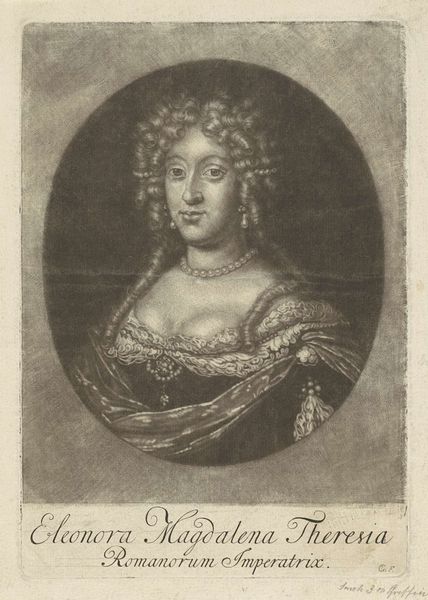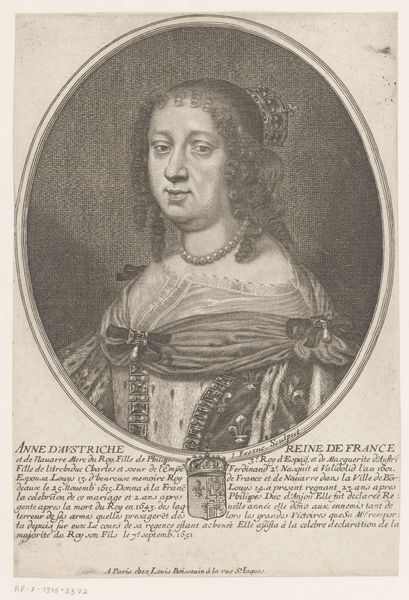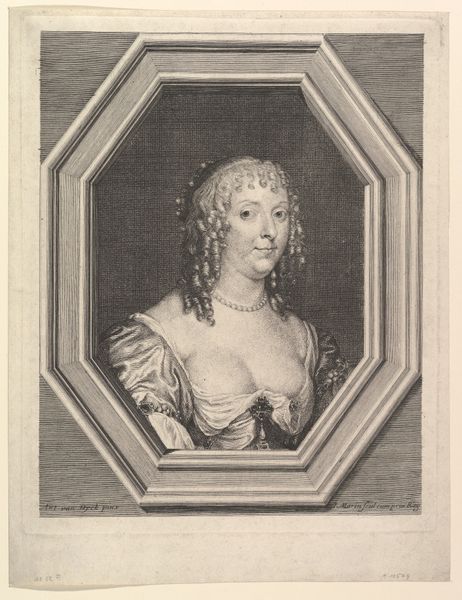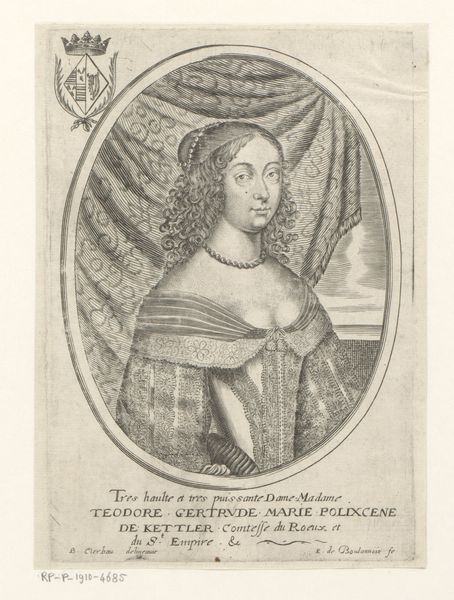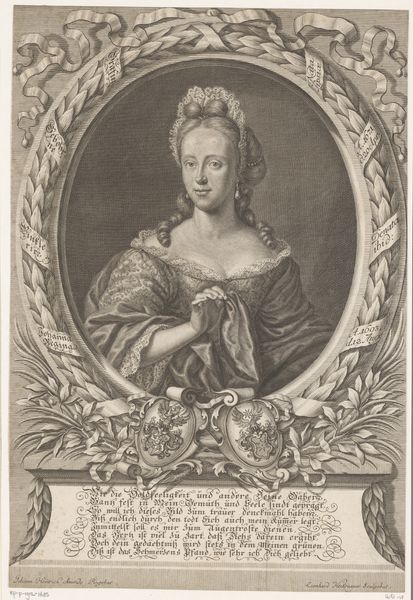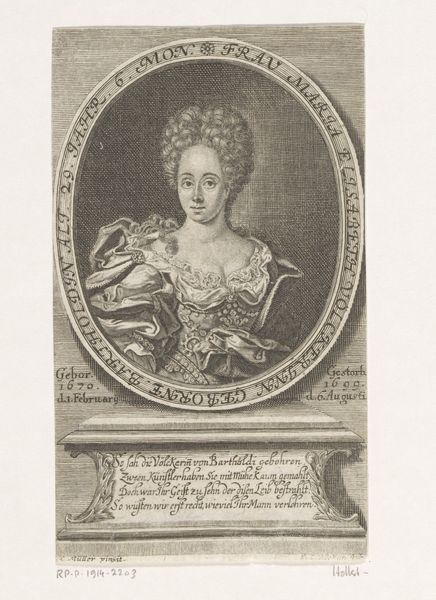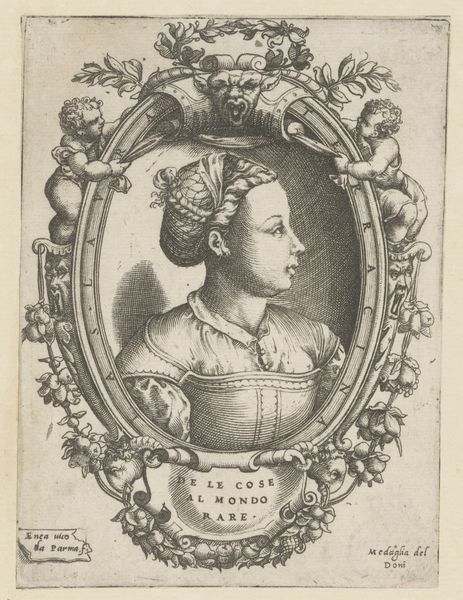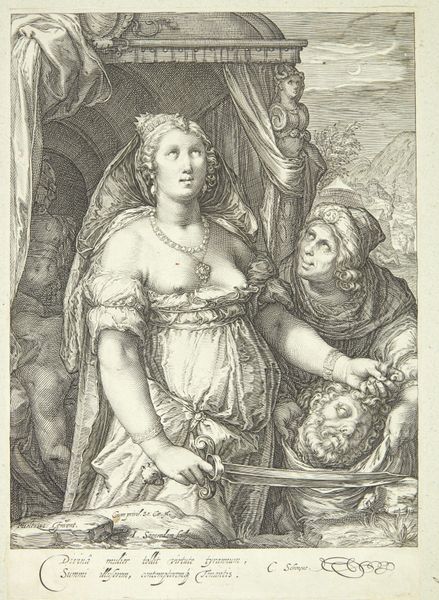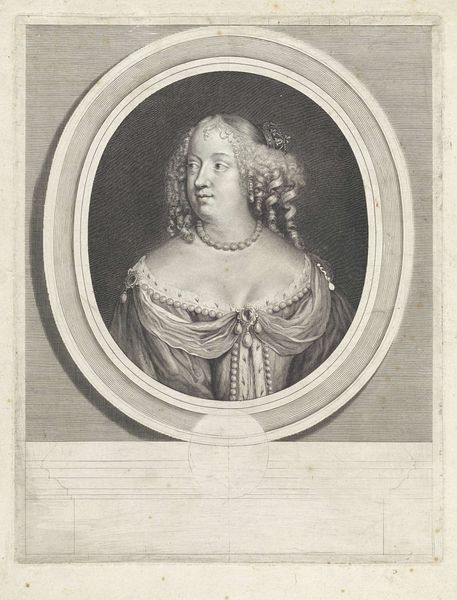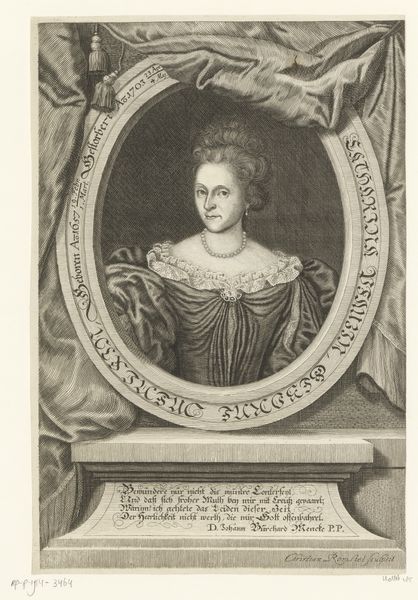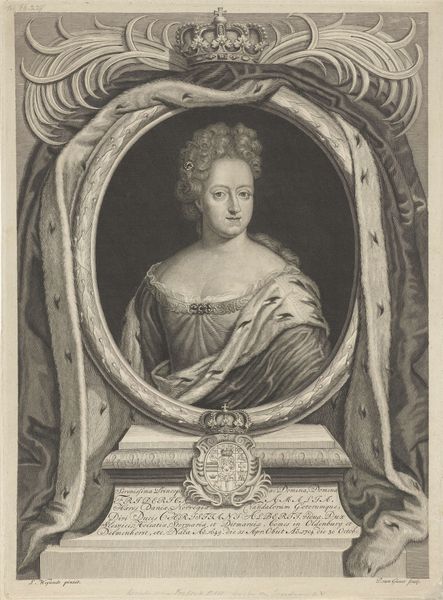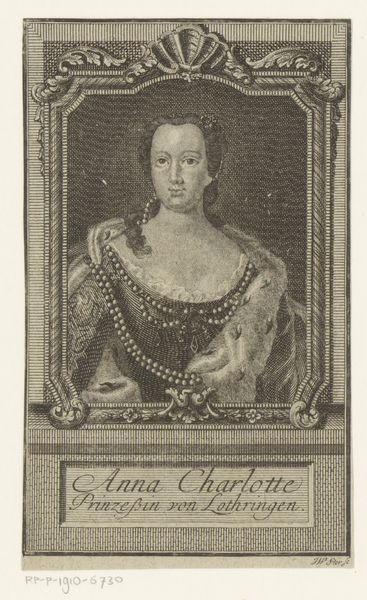
Portretten van twee onbekende vrouwen, beiden als herderin 1640
0:00
0:00
crispijnvandeiipasse
Rijksmuseum
print, engraving
#
baroque
# print
#
figuration
#
genre-painting
#
history-painting
#
academic-art
#
engraving
Dimensions: height 120 mm, width 149 mm
Copyright: Rijks Museum: Open Domain
Curator: This engraving by Crispijn van de Passe the Younger, created in 1640, presents us with paired portraits of two unknown women, fancifully depicted as shepherdesses. What strikes you immediately about this composition? Editor: There is something slightly unsettling, or perhaps restrained, about the gazes of the subjects. Their features are delicately rendered, of course, in the fashion of the era. Overall, it is clear that it has academic influence through its delicate design. Curator: It is worth remembering that prints like this served a social function beyond mere aesthetics. Engravings were commodities, traded and collected. Crispijn, son of a prominent printmaker, operated within a familial business structure. Editor: The very clear, precise line work speaks of the skill required to incise the copper plate, demanding tremendous control. There is a textural contrast created with the rendering of the dresses that shows a sensitivity towards the effects that are possible through line work alone. It has remarkable detail, particularly in their hair and lace trim. Curator: Yes, the contrast is striking. The pastoral ideal, with its inherent themes of labor and class, is carefully constructed. Note how the clothing of the women, while referencing a 'lower' class, speaks instead of leisure and wealth. The print served, effectively, to reinforce and circulate ideals of beauty, status, and the role of women in society, commodified in ink and paper. These were luxury items, showcasing skilled craft labor for a select audience. Editor: In this, each element works cohesively: The framing ovals, the positioning of the figures in a relatively symmetrical way. But, interestingly, the background each is against is markedly different, suggesting maybe there is a desire to tell their story and individuality, a divergence away from the similarities suggested on the surface level by the composition. It makes me question whether that plays against the formal intention or perhaps even highlights it? Curator: This offers an interesting perspective to how printmaking and portraiture allowed the sitters, often from the bourgeois classes, to display their refinement as well as creating new marketplaces for dissemination of personal style in portraiture through the controlled use of engraving as a commodity, especially in the context of genre and history-painting traditions of the time. Thank you, this was extremely insightful. Editor: A pleasure, truly. The layering and detailing that can be created from one printed surface continue to be areas that offer potential and dynamism for analysis.
Comments
No comments
Be the first to comment and join the conversation on the ultimate creative platform.
